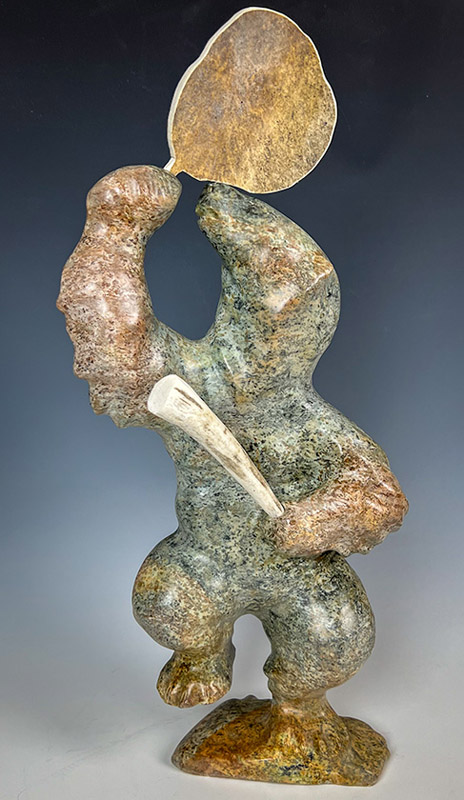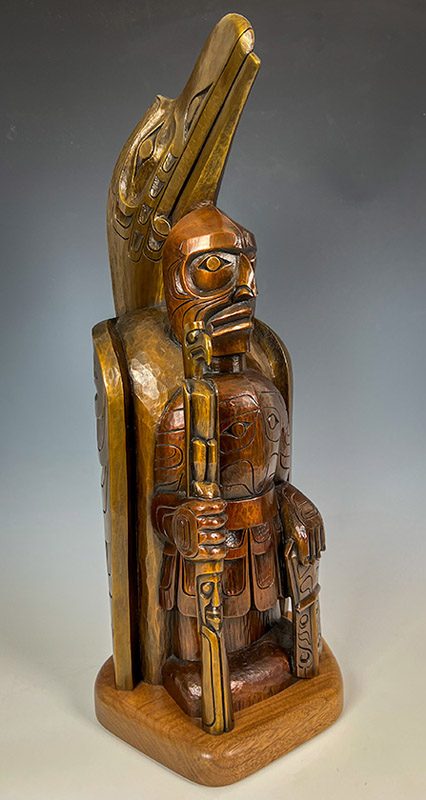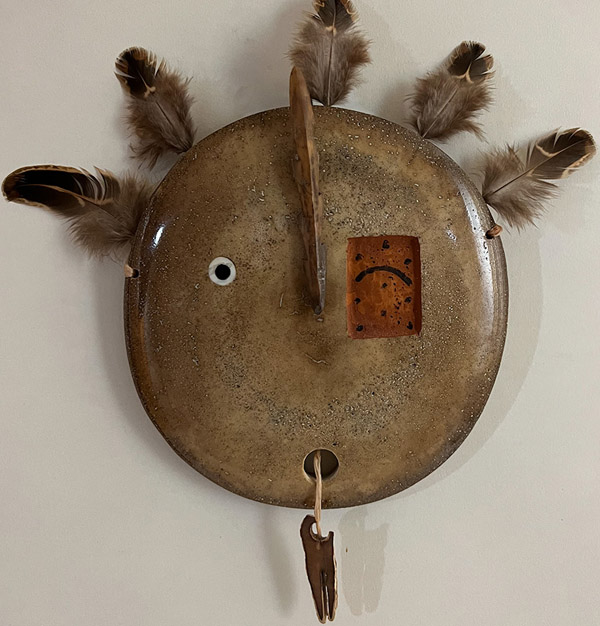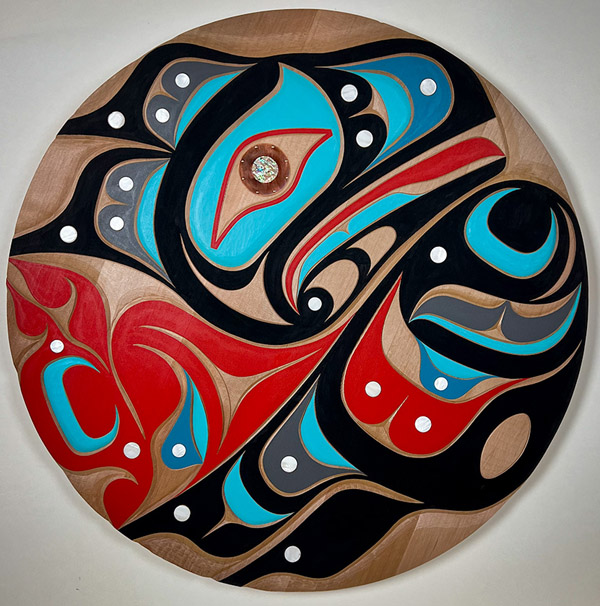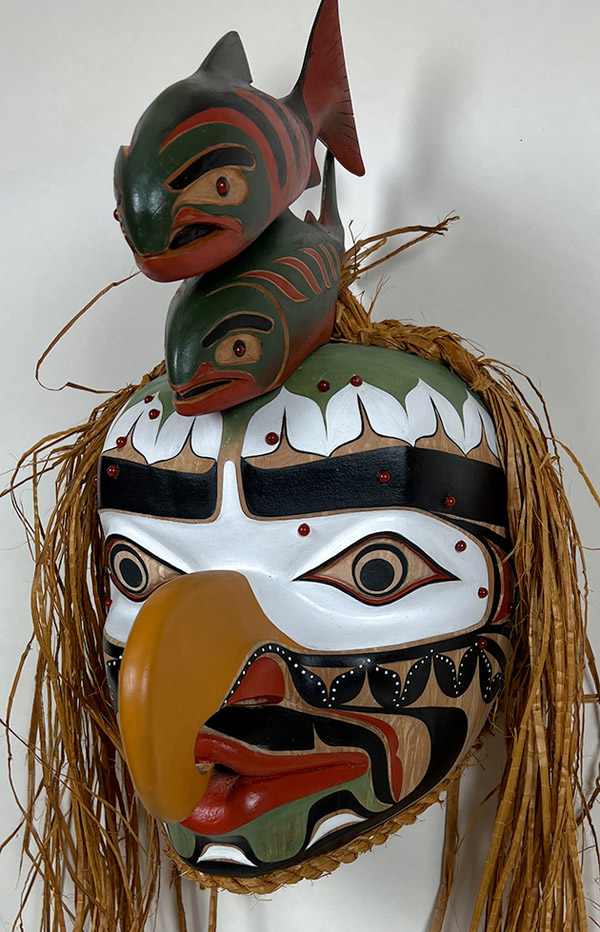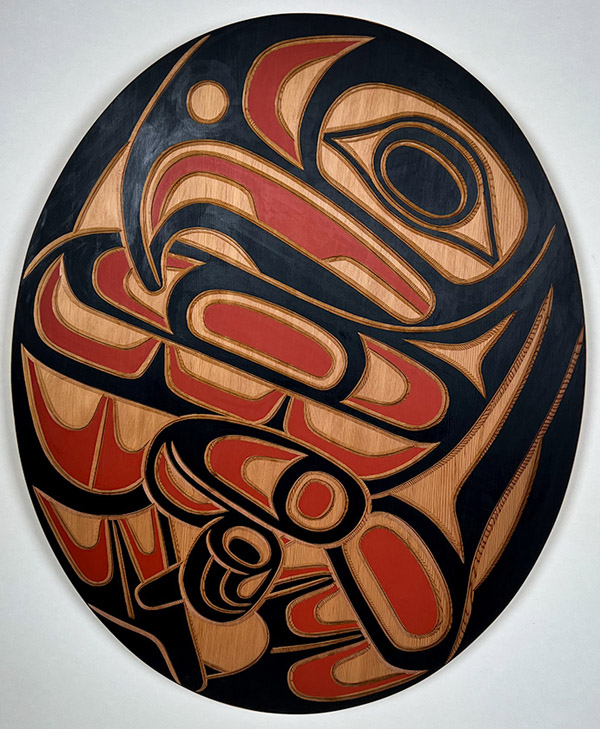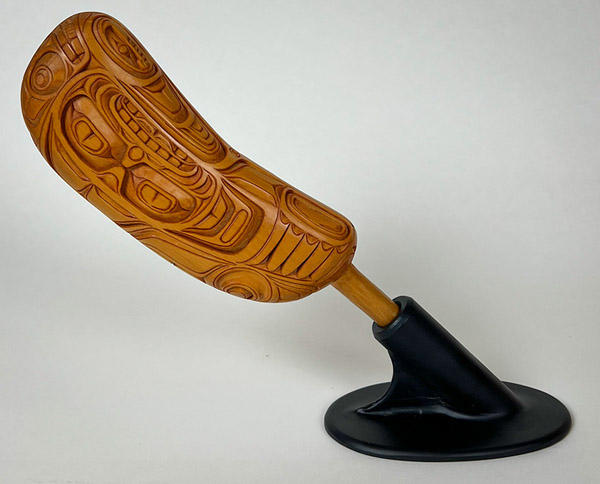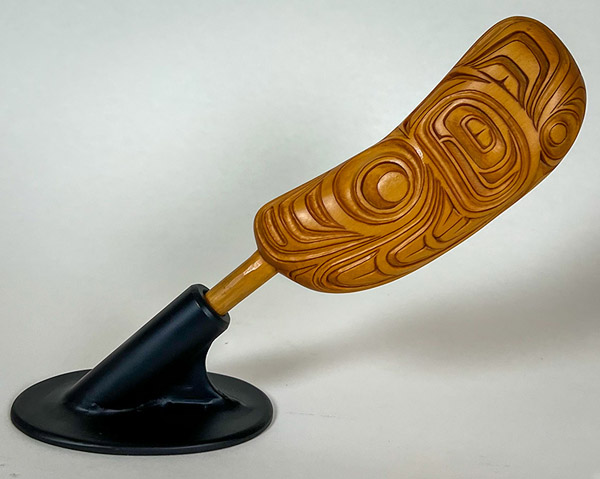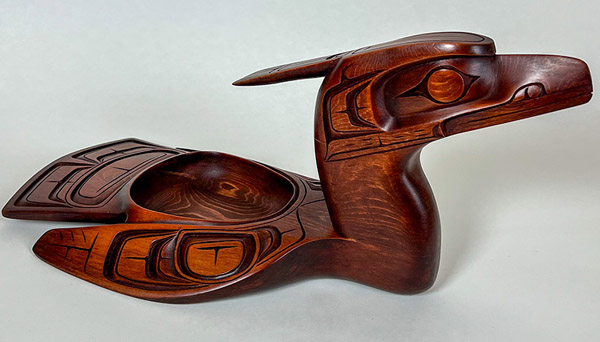“Northwest Coast Native art has always had the power to enthrall viewers. From the first explorers to the present day collector, highly graphic and inventive Indian designs have intrigued and sometimes mystified observers. Distinguished by sophistication and complexity, yet composed of simple traditional elements, Northwest Coast Indian art has become one of the most sought after contemporary art forms.
Although grouped together as “Northwest Coast” the work of the major cultural groups – Haida, Tlingit, Tsimpshian, Kwagiutl and Coast Salish – show many stylistic differences. All Northwest Coast native art, however, makes use of local cedar for masks, monumental art, wood carving, bentwood boxes and baskets. Magnificent totem poles and house posts have become emblematic of the Northwest Coast and tell stories of a rich, ancient native culture.
The same traditional form-line designs used on totem poles and masks are now employed on contemporary two-dimensional art. Serigraphs or silk-screens sold in limited editions have become one of the most popular forms of non-traditional, commercial Northwest Coast Native Indian art.
Coast Salish artist Susan Point’s works in glass, and Kwagiutl artists Richard and Stan Hunt’s bronzes have also stretched the boundaries of materials used by contemporary Northwest Coast tribal artists. As prominent Haida artist Robert Davidson has said: “The only way tradition can be carried on is to keep inventing new things.”

